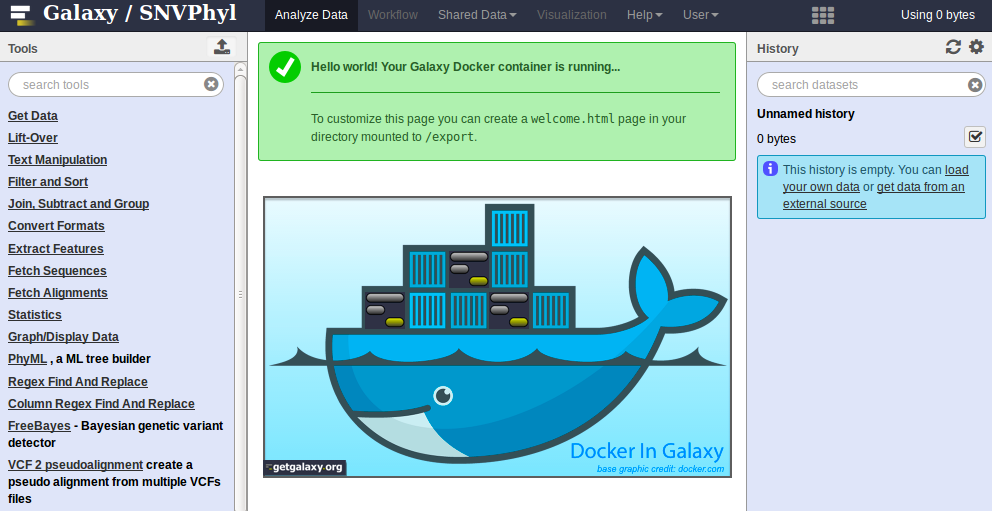SNVPhyl Docker
SNVPhyl and Galaxy can both be installed and run very quickly using the provided Docker image. Docker provides a method to package software along with all dependencies and run on any machine with Docker installed. Please refer to the Docker installation guide for more details, however, Docker can quickly be installed under Linux with:
curl -sSL https://get.docker.com/ | sh
You may have to start the docker service after installation for Docker to work. Depending on your system, this may involve running sudo service docker start, or sudo systemctl start docker.
Running SNVPhyl
Once Docker is installed, the latest version of SNVPhyl can be downloaded and run with:
docker run -d -p 48888:80 phacnml/snvphyl-galaxy-1.0.1
This will download and run a docker image with SNVPhyl and Galaxy. By default this will not persist data run through SNVPhyl after Docker has been shutdown. To permanently store this data, please run:
docker run -d -p 48888:80 -v /home/user/galaxy_storage/:/export/ phacnml/snvphyl-galaxy-1.0.1
Where /home/user/galaxy_storage as a location where files will be persisted between Docker runs. For more information on how this works, see the Galaxy Docker page.
Once running, you may log into the SNVPhyl Galaxy instance by going to http://localhost:48888 on your machine. This should present you with a screen like the following:

Once Galaxy is started, please login (User > Login) with the credentials admin@galaxy.org and admin. See the User Guide for more details on using SNVPhyl.
Shutdown SNVPhyl
To shutdown the Docker container, first run:
docker ps
This will show a list of all running docker containers, similar to:
CONTAINER ID IMAGE ...
0d56c773a972 phacnml/snvphyl-galaxy-1.0.1 ...
This shows all running docker containers and a unique container id. To shutdown the docker container, please use this container id and run the below command.
docker kill 0d56c773a972
The SNVPhyl/Galaxy Docker image is based on the Galaxy Docker image. Please refer to the documentation for more information on using this Docker image.